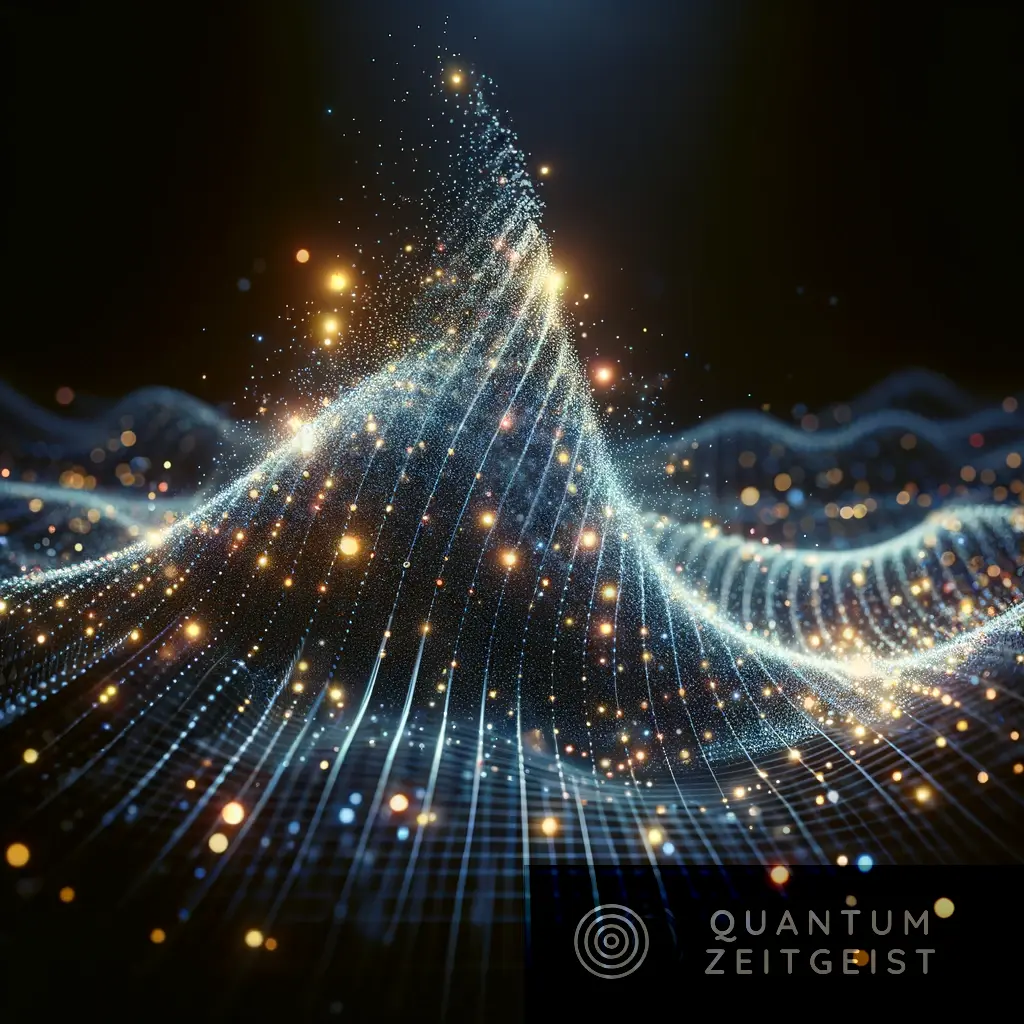Microsoft’s Azure Quantum has developed a hybrid quantum supercomputer that combines quantum and classical computing to solve complex problems. The system requires at least one million stable and controllable qubits, and uses error correction to maintain stability. Microsoft’s unique topological qubit design aids this stability. The hybrid nature of the supercomputer allows for the integration of quantum and classical computing. Researchers from Microsoft and Quantinuum have successfully run Magic State Distillation and Repeat-Until-Success algorithms on the Azure Quantum system. The system uses Quantum Intermediate Representation to represent quantum and classical logic, optimising program logic.
Quantum Supercomputers: The Future of Problem Solving
Quantum supercomputers are being developed to solve complex problems in fields such as chemistry and materials science. These machines require a minimum of one million stable and controllable qubits to solve algorithmic problems more efficiently than classical computers. This information is based on profiling quantum programs using the Azure Quantum resource estimator.
Quantum supercomputers also need to be kept stable, which requires error correction to combat the fundamental noise processes that disrupt the quantum computer. This stability is achieved by transforming the underlying noisy physical qubits into more stable logical qubits and using fault-tolerant methods to implement operations. Regardless of the qubit design, advanced classical computational power is required to maintain a quantum machine’s stability, along with the underlying quantum error-correcting code.
“Integrated Hybrid in Azure Quantum allows to mix classical and quantum code together already today. This opens the door to a new generation of hybrid algorithms that can benefit from complex side-computations that happen while the quantum state of the processor stays coherent”
Natalie Brown, Senior Advanced Physicist at Quantinuum.
Hybrid Quantum Computing: The Integration of Quantum and Classical Compute
A quantum supercomputer will necessarily be hybrid, both in its implementation and in the solutions it runs. All quantum algorithms require a combination of both quantum and classical compute to produce a solution. The careful design of the classical and quantum compute, together, is where future innovation and new types of solutions are expected to emerge. Hybrid quantum computing enables the seamless integration of quantum and classical compute together. This is an important part for achieving quantum at scale and to integrate quantum machines alongside supercomputing classical machines in the cloud.
Implementing Hybrid Quantum Algorithms on Azure Quantum
Integrated Hybrid in Azure Quantum allows to mix classical and quantum code together. This opens the door to a new generation of hybrid algorithms that can benefit from complex side-computations that happen while the quantum state of the processor stays coherent. Two such quantum algorithms are Magic State Distillation (MSD) protocols and Repeat-Until-Success (RUS) protocols. Both these algorithms require complex control flow, including measurements that are applied during the computation while some part of the quantum computer remains coherent.
Experimental Results of Hybrid Quantum Algorithms
Recently, a team of researchers from Microsoft and Quantinuum developed and ran MSD and RUS algorithms on the H1-Series in Azure Quantum. The programs for the applications were written in Q# and were then compiled to the Quantum Intermediate Representation (QIR), which is based on LLVM, a representation widely used in classical compilers. QIR allows to represent quantum and classical logic using function declarations, basic blocks, and control flow instructions. QIR also enables us to use existing LLVM tools and techniques to analyze and optimize the program logic.
Conclusion: The Future of Quantum Computing
In conclusion, the quantum programming language Q# can be used to implement and optimize fault-tolerant protocols that use a hybrid approach of quantum and classical logic. Two examples of such protocols, MSD and RUS circuits, have been demonstrated through Azure Quantum on Quantinuum’s H1 series system that runs on an ion trap quantum charge-coupled device architecture platform. QIR can leverage the LLVM toolchain to enable interoperability and portability across different quantum hardware platforms. Whether you’re starting your own learning journey, exploring quantum hardware, or developing quantum algorithms for the future, Azure Quantum offers a platform for your quantum exploration and innovation.
“At Microsoft, we are architecting a public cloud with Azure that enables scaled quantum computing to become a reality and then seamlessly delivers the profound benefits of it to our customers. Learn more about how Microsoft is harnessing the power of the cloud to make the promise of quantum at scale a reality and join our Microsoft Quantum Innovator Series with distinguished speakers that provide unique insights into Microsoft’s quantum computing effort.”
Martin Roetteler, Microsoft Quantum.
Quantum supercomputers, capable of solving complex problems in chemistry and materials science, require a combination of quantum and classical computing to produce solutions. Recent research has demonstrated the successful implementation and optimisation of hybrid quantum algorithms, which combine quantum and classical logic, on a quantum computing system.
- Microsoft’s Azure Quantum is working on building a quantum supercomputer to solve complex problems in chemistry and materials science.
- The quantum supercomputer requires at least one million stable and controllable qubits, error correction to combat noise disruption, and a hybrid implementation combining quantum and classical compute.
- Microsoft’s unique topological qubit design has built-in stability at the hardware level, reducing the overhead to realise logical, fault-tolerant computation with a quantum error correcting code.
- Azure Quantum’s Integrated Hybrid allows the mixing of classical and quantum code. Natalie Brown, Senior Advanced Physicist at Quantinuum, suggests this could lead to a new generation of hybrid algorithms.
- Magic State Distillation (MSD) protocols and Repeat-Until-Success (RUS) protocols are two quantum algorithms that require complex control flow.
- A team of researchers from Microsoft and Quantinuum have successfully developed and ran MSD and RUS algorithms on the H1-Series in Azure Quantum.
- The programs were written in Q# and compiled to the Quantum Intermediate Representation (QIR), which is based on LLVM, a representation widely used in classical compilers.
- Quantinuum’s H1-Series quantum computer leverages QIR to execute hybrid classical/quantum programs.
- The researchers demonstrated the viability of the RUS protocol using QIR on Quantinuum’s QCCD simulator, which models realistic noise and errors in trapped ion systems.

